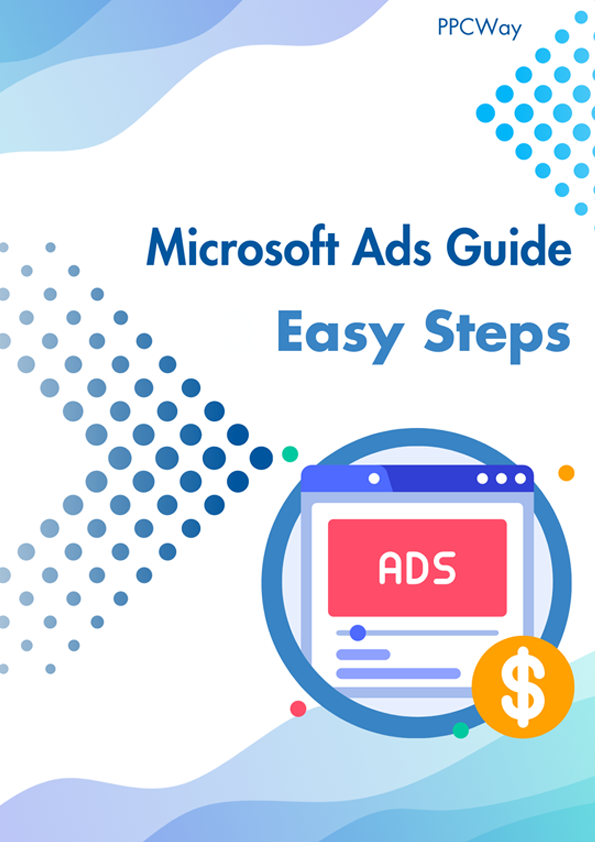What is ad spying?
Ad spy or spy online advertising competitors, also known as competitive advertising intelligence or ad monitoring, is the practice of analyzing and monitoring the advertisements and marketing strategies of competitors in order to gain insights and leverage them in your own advertising campaigns.
It involves systematically researching and tracking the advertising activities of rival companies across various channels, such as print media, television, radio, online platforms, social media, and search engines.
Ad spying typically involves collecting and analyzing data on competitor ads, including their content, messaging, creative elements, targeting strategies, placement, frequency, and performance metrics.
The goal is to understand what marketing tactics and messages competitors are using to attract customers, identify any gaps or opportunities in the market, and develop more effective advertising strategies for your own business.

Ways to Spy On Your Competitor’s Ads
There are various tools and techniques available for ad spying, including:
Manual monitoring: This involves personally observing and documenting competitor ads across different channels.
Ad monitoring tools: These are specialized software or online services that automate the process of tracking and analyzing competitor ads. They can provide comprehensive data and insights, including ad creatives, ad spend estimates, targeting information, and performance metrics.
Social media listening tools: These tools allow you to monitor and analyze social media platforms for mentions, discussions, and ad campaigns of your competitors.
Search engine monitoring: By tracking keywords and search engine advertising, you can gain insights into the online advertising strategies of your competitors.
Ad network intelligence: Some tools provide information on the ads being displayed on various ad networks, helping you understand which ads your competitors are running and on which websites.
By engaging in ad spying, businesses can better understand their competitive landscape, benchmark their own advertising efforts, identify emerging trends, uncover new marketing opportunities, and optimize their own campaigns to stay ahead of the competition. However, it's important to conduct ad spying ethically and in compliance with applicable laws and regulations.
Ad monitoring tools
Ad intelligence platforms: Tools like SEMrush, SpyFu, Anstrex, PowerAdSpy and AdSpy allow you to monitor and analyze your competitor's ads across various online channels, including search engines, social media, and display networks.
Social media monitoring tools: Services like Sprout Social, Hootsuite, or Mention can help you track your competitor's social media activity, including their paid advertisements and sponsored content.
Top 10 Tools for Competitive Ad Intelligence: Uncover Your Competitor's Advertising Strategies
SEMrush: SEMrush provides comprehensive competitive intelligence, including data on your competitor's ad campaigns, keywords, ad copies, and ad performance across various search engines and social media platforms.
SpyFu: SpyFu offers insights into your competitor's paid search and SEO strategies. It allows you to view your competitor's ad history, keywords, and ad copies, helping you identify their advertising tactics.
AdSpy: AdSpy is a powerful social media ad intelligence tool that focuses on Facebook and Instagram ads. It provides in-depth data on your competitor's ad creatives, targeting options, engagement metrics, and more.
Moat: Moat is a digital ad intelligence platform that lets you explore display ads across multiple networks. It allows you to search for your competitor's display ads and gain insights into their creative strategies.
Adbeat: Adbeat offers competitive intelligence for online display advertising. It allows you to track your competitor's display ads, view their landing pages, and analyze their ad networks and placements.
WhatRunsWhere: WhatRunsWhere is a competitive intelligence tool that covers both display and native advertising. It provides data on your competitor's ad campaigns, ad networks, creatives, and landing pages.
SocialPeta: SocialPeta is a social media ad intelligence tool that provides insights into your competitor's advertising on platforms like Facebook, Twitter, Instagram, and more. It offers data on ad creatives, targeting options, and engagement metrics.
BuzzSumo: BuzzSumo helps you analyze content performance and identify your competitor's most successful content pieces. By understanding their content strategy, you can gain insights into their advertising and promotion efforts.
SimilarWeb: SimilarWeb offers competitive analysis for websites, including traffic sources, audience insights, and referring sites. By studying your competitor's website traffic, you can infer their advertising efforts.
iSpionage: iSpionage is a competitive research tool that focuses on paid search advertising. It allows you to track your competitor's keywords, ad copies, and landing pages to understand their PPC strategies.
These tools offer varying levels of features and pricing plans, so consider your specific requirements and budget when choosing the most suitable tool for your needs.
How To Spy On Your Competitors Google Ads
Spying on your competitors' Google Ads can provide valuable insights into their advertising strategies and help you refine your own campaigns. Here's a step-by-step guide on how to spy on your competitors' Google Ads:
1. Identify Your Competitors: Make a list of your main competitors in your industry or niche. These are the businesses you want to monitor and gather insights from.
2. Perform Keyword Research: Conduct keyword research to identify the relevant keywords your competitors are targeting in their Google Ads campaigns. Tools like Google Keyword Planner, SEMrush, or SpyFu can help you identify the keywords your competitors are bidding on.
3. Search for Competitor Ads: Perform Google searches using the identified keywords and analyze the search engine results pages (SERPs). Take note of the ads that appear at the top, bottom, and sides of the search results. Pay attention to the ad copies, extensions, and URLs your competitors are using.
4. Use Ad Preview and Diagnosis Tool: Google Ads provides an Ad Preview and Diagnosis tool within the Google Ads platform. This tool allows you to search for specific keywords and see the ads that appear for those keywords in different locations. You can set the location, language, and device preferences to refine your search.
5. Utilize Auction Insights: Google Ads offers an Auction Insights report that provides information on how your ads are performing compared to your competitors. This report includes data on impression share, average position, overlap rate, and more. Analyze this data to understand how your competitors' ads are competing with yours.
6. Leverage Ad Monitoring Tools: Several third-party tools specialize in monitoring and analyzing Google Ads. Tools like SEMrush, SpyFu, AdBeat, or iSpionage offer features that allow you to track your competitors' Google Ads campaigns, including their ad copies, landing pages, bid strategies, and performance metrics.
7. Monitor Display Network Ads: In addition to search ads, Google Ads also includes display network advertising. Tools like Moat or Google's Display & Video 360 (DV360) allow you to track and analyze your competitors' display ads, including their creatives, targeting options, and placements.
8. Analyze Landing Pages: Click on your competitors' ads and analyze the landing pages they direct users to. Pay attention to the messaging, design, and calls-to-action on these pages. This can provide insights into their conversion strategies and user experience.
9. Keep Up with Changes: Regularly monitor your competitors' Google Ads campaigns as their strategies may evolve over time. Stay updated on any changes in their ad copies, keywords, landing pages, or targeting options to ensure you have the latest information.
Remember to conduct competitor analysis ethically and within the boundaries of applicable laws and regulations. The goal is to gain insights and inspiration from your competitors while developing your own unique advertising strategies.

Pros for Spy Online Advertising Competitors
Spying on online advertising competitors offers several benefits and advantages. Here are some pros of monitoring and analyzing your competitors' online advertising strategies:
1. Insights into Effective Strategies: By studying your competitors' successful campaigns, you can gain valuable insights into effective advertising strategies, messaging, and creative elements that resonate with the target audience. This knowledge can help you refine your own campaigns and improve your chances of success.
2. Identifying Market Trends: Monitoring your competitors allows you to identify emerging market trends and shifts in consumer preferences. By staying updated on industry developments, you can adjust your advertising tactics accordingly and stay ahead of the curve.
3. Discovering New Advertising Channels: Competitors might be utilizing advertising channels or platforms that you haven't explored yet. By spying on their advertising activities, you can discover new channels and assess their effectiveness for reaching your target audience.
4. Benchmarking Performance: Analyzing your competitors' ad performance metrics can help you benchmark your own campaigns. You can compare key metrics such as click-through rates (CTRs), conversion rates, and engagement levels, allowing you to assess your relative performance and identify areas for improvement.
5. Uncovering Untapped Opportunities: By monitoring your competitors' ads, you may identify gaps or untapped opportunities in the market. This could involve targeting specific audience segments, focusing on underserved niches, or exploring innovative advertising approaches that your competitors haven't capitalized on yet.
6. Cost Efficiency and Time Savings: By learning from your competitors' experiences, you can avoid trial and error in your advertising campaigns. By understanding what works and what doesn't, you can save time, resources, and advertising budget by focusing on proven strategies.
7. Competitive Advantage: By keeping a close eye on your competitors' advertising activities, you can proactively respond to their moves and maintain a competitive advantage. This enables you to adapt your own strategies, differentiate your brand, and better position yourself in the market.
Remember to approach competitor spying ethically, adhering to applicable laws and regulations, and utilizing the gathered insights to inform and enhance your own advertising efforts rather than engaging in unethical practices.
Cons for Spy Online Advertising Competitors
While spying on online advertising competitors can offer valuable insights, it's important to consider the potential drawbacks and limitations. Here are some cons to be aware of:
1. Legal and Ethical Considerations: Monitoring competitors should be conducted within legal boundaries and ethical standards. Engaging in unethical practices or violating privacy laws can lead to reputational damage and legal consequences.
2. Incomplete Information: While monitoring competitors can provide valuable insights, it's important to recognize that you may not have access to the complete picture. Competitors may have undisclosed campaigns or strategies that you are unable to uncover, limiting the comprehensiveness of your analysis.
3. Limited Context: Understanding the context behind competitors' advertising decisions can be challenging. Without a clear understanding of their overall marketing objectives, target audience, or broader business strategy, it may be difficult to accurately interpret the reasoning behind their specific advertising tactics.
4. Resource Intensive: Gathering and analyzing competitor data requires time, effort, and resources. It may involve using specialized tools, conducting manual research, and staying up-to-date with industry trends. Allocating sufficient resources to competitor analysis can be a challenge, especially for smaller businesses with limited budgets or personnel.
5. Overemphasis on Competition: Focusing too much on competitors can divert attention away from your own unique value proposition and customer needs. It's important to strike a balance between monitoring competitors and maintaining a customer-centric approach to ensure your advertising efforts align with your own business goals and target audience.
6. Lack of Real-Time Updates: Competitors' advertising strategies can change rapidly. The information you gather may quickly become outdated, especially if your monitoring practices are infrequent or limited to specific channels. Staying up-to-date with real-time changes can be challenging and may require more extensive monitoring efforts.
7. Dependency on External Factors: Competitor analysis should not be the sole driver of your advertising strategy. Relying solely on what your competitors are doing can limit your own creativity and innovation. It's essential to combine competitor insights with a broader understanding of your market, audience preferences, and your own unique strengths.
Considering these cons, it's crucial to approach competitor analysis as a complementary tool rather than the sole determinant of your advertising strategy. Balance it with a focus on your own value proposition, customer needs, and overall business objectives.

Conclusion:
In conclusion, having access to the right tools for competitive ad intelligence can provide valuable insights into your competitor's advertising strategies. The top 10 tools mentioned above offer a range of features and functionalities to help you spy on your competitor's ads effectively.
By utilizing these tools, you can gain a deeper understanding of your competitor's ad campaigns, including their ad creatives, keywords, targeting options, and performance metrics across various channels.
Armed with this knowledge, you can make more informed decisions about your own advertising efforts, identify new opportunities, and stay ahead of the competition in the ever-evolving landscape of digital marketing.
Remember to use these tools ethically and within the bounds of applicable laws and regulations, focusing on leveraging the insights obtained to enhance your own advertising strategies rather than directly copying your competitors.


